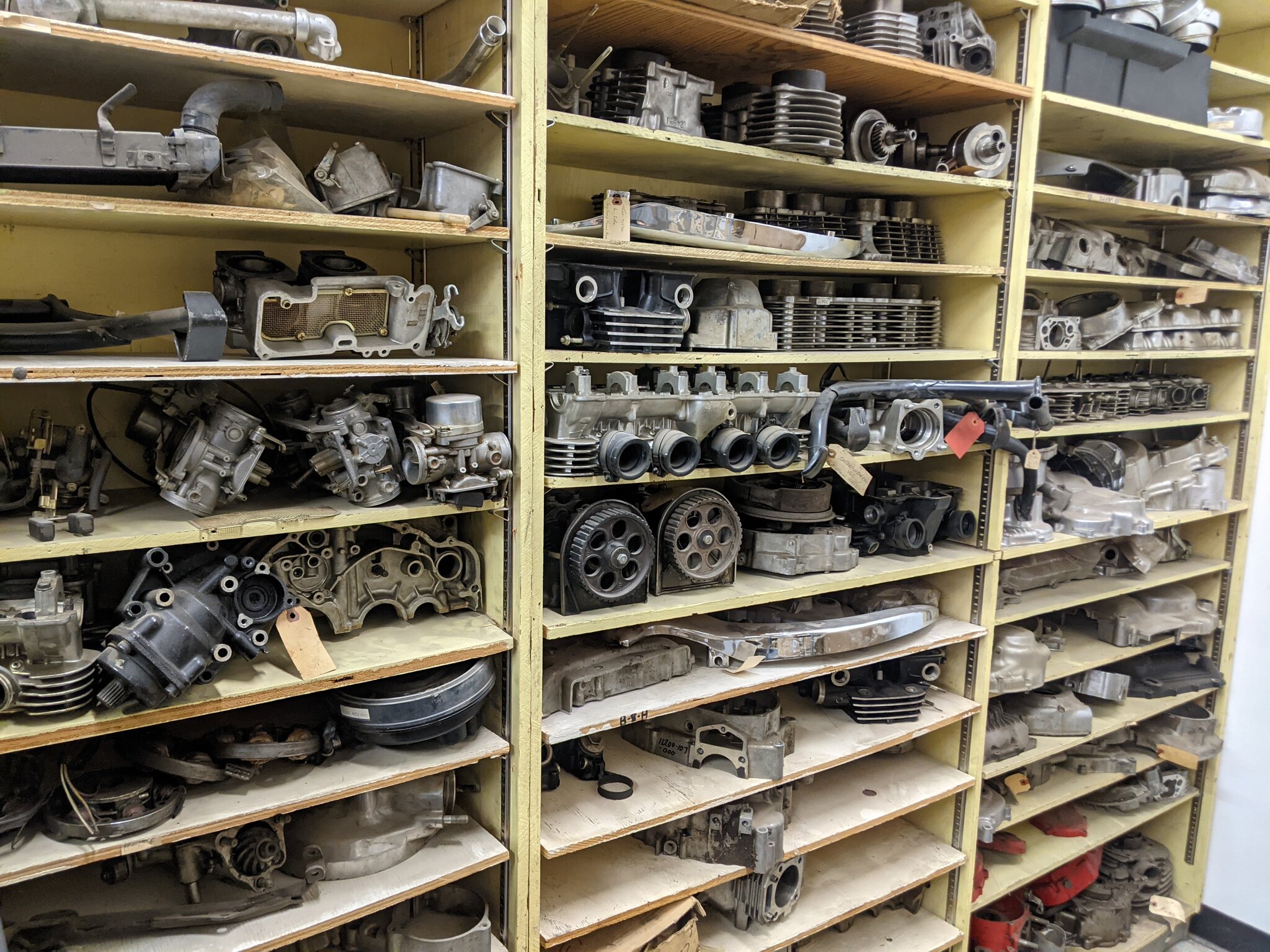Check Out the most up to date Motocross Gear NZ for every single Degree of Rider
Check Out the most up to date Motocross Gear NZ for every single Degree of Rider
Blog Article
Recognizing the Necessary Parts of a Motorcycle: A Comprehensive Guide for Fanatics
For motorbike enthusiasts seeking to elevate their riding experience and guarantee their bikes run efficiently, understanding the crucial elements of a bike is critical. Each component, from the engine's elaborate operations to the critical role of the braking devices, not only impacts efficiency but likewise safety and security and comfort. This guide will certainly walk with the basic parts that every biker ought to recognize with, enabling educated selections in both upkeep and potential upgrades. As we begin this exploration, one must ask: exactly how does each component connect to produce the smooth ride every enthusiast seeks?
Engine Components

The camshaft plays a vital duty in regulating the timing of the engine's valves, ensuring the exact opening and closing required for efficient fuel and air consumption, in addition to exhaust expulsion. This timing is essential to keeping optimal engine performance and efficiency. Additionally, the carburetor or fuel injection system, relying on the bike version, is liable for mixing air with gas in the appropriate proportion for burning.
The cooling system, either air or liquid-based, functions to preserve the engine's temperature level within operational limits, preventing overheating and making sure long life - motorcycle shop. Each component, meticulously developed and incorporated, adds to the smooth procedure of the engine, specifying the motorbike's power result and overall performance
Transmission System
Indispensable to the bike's functionality, the transmission system guarantees reliable power transfer from the engine to the wheels. This system consists of several vital parts, including the clutch, gearbox, and final drive, each playing an important function in equating the engine's power right into motion. The clutch, commonly run by a hand lever, serves to disengage the engine and involve from the transmission, permitting for smooth equipment adjustments and regulated acceleration.
The gearbox, frequently referred to as the transmission appropriate, includes a set of gears that bikers can manually shift through to adjust the bike's speed and torque output. These gears are organized in a series that makes it possible for the bike to accelerate smoothly and keep ideal engine efficiency across various speeds. A lot of bikes use a consecutive gearbox, needing the motorcyclist to move gears in a predetermined order.
Braking Devices
While understanding the transmission system is key to utilizing a motorbike's power, similarly vital is the ability to manage and stop that power effectively, which is where stopping devices enter play. Brakes are important for safety and efficiency, supplying the rider with the essential control to browse different terrains and problems. Usually, motorcycles include two sorts of stopping systems: disc brakes and drum brakes.
Disc brakes are extra common in modern motorcycles due to their superior performance. This system offers better heat dissipation, constant efficiency, and boosted stopping power, particularly in wet problems.
Alternatively, drum brakes, though less usual, are still located in some motorcycles. They work by pressing brake footwear against the internal surface of a drum connected to the wheel. While generally less reliable in heat dissipation and stopping power, drum brakes are easier and much more economical.
Recognizing these braking systems' nuances enables bikers to maintain their motorbikes correctly and appreciate the engineering that ensures reliable and safe stopping.
Suspension and Guiding
Suspension and guiding systems are important parts that considerably affect a motorbike's handling and experience convenience. The shock absorber, containing forks at the front and look at this now shock absorbers at the rear, soaks up roadway abnormalities, boosting security and control. Front forks, inverted or usually telescopic, compress and rebound to alleviate impacts, while back shock absorbers keep tire call with the road, important for traction and safety.
Steering, centered around the handlebars, links the cyclist to the motorbike's directional control. The steering head bearings guarantee smooth operation, permitting precise ability to move. Proper placement and upkeep of these bearings are critical for foreseeable guiding action and minimizing motorcyclist fatigue.
The suspension's adjustability is another vital aspect; preload, damping, and rebound settings enable modification to suit numerous riding designs and conditions. This adaptability is vital for maximizing performance, whether navigating metropolitan streets or tackling tough routes. Innovations like electronic suspension systems provide real-time modifications, enhancing adventure high quality across diverse terrains.

Electric Equipments
After ensuring a smooth and regulated experience through effective suspension and guiding systems, focus turns to the electrical systems, an essential aspect of contemporary motorbikes. These systems play a crucial duty not only in starting the engine however likewise in powering various elements that improve the capability and security of the bike.
At the heart of a motorbike's electrical system is the battery, which stores electric power required for beginning the engine and powering auxiliary systems - motorbike shop. The generator or generator, coupled with the rectifier-regulator, makes sure the battery remains charged while the bike is in procedure, transforming power right into electric energy and click here for more keeping voltage degrees
The ignition system, another crucial element, is in charge of firing up the air-fuel mixture in the engine's cyndrical tubes. Modern bikes usually utilize a digital ignition system, supplying better efficiency and reliability compared to typical systems.
Lights systems, consisting of fronts lights, tail lights, and indicators, are also crucial, making sure presence and safety and security for the cyclist. Extra electronic elements such as sensing units, control systems, and displays add to sophisticated features like gas injection monitoring, helpful hints anti-lock stopping systems (ABDOMINAL), and digital control panels, better improving the riding experience.
Final Thought
An extensive understanding of a bike's essential elements, including the engine, transmission system, stopping mechanisms, suspension, guiding, and electric systems, is indispensable for enthusiasts aiming to optimize safety and security, comfort, and efficiency. Proficiency of these elements permits for informed choices concerning upkeep and upgrades, eventually boosting the riding experience. By integrating this understanding, riders can guarantee their bikes operate at peak effectiveness and reliability, consequently making best use of both pleasure and longevity of their automobiles.
For motorcycle lovers looking to boost their riding experience and ensure their bikes run efficiently, recognizing the necessary components of a bike is vital.Important to the motorbike's functionality, the transmission system guarantees effective power transfer from the engine to the wheels.While comprehending the transmission system is key to utilizing a motorbike's power, similarly important is the ability to control and stop that power successfully, which is where stopping devices come right into play. Typically, motorcycles feature two kinds of stopping systems: disc brakes and drum brakes.
A thorough comprehension of a motorcycle's necessary parts, consisting of the engine, transmission system, braking mechanisms, suspension, guiding, and electric systems, is vital for enthusiasts intending to optimize comfort, performance, and safety.
Report this page